Last year, The Japan Red Cross society sparked outrage by using Uzaki-chan in their promotional material; her big chest was deemed ‘inappropriate’ for the public eye. This month, another controvery has been stirred up around another anime girl in advertisement. In a collaboration with JA Nansun, a group that assists farmers in several areas of Shizuoka, Love Live’s Chika Takami appears as an ambassador for the group’s citrus fruit, Nishiura Mikan. While this attracted praise from Love Live! fans, it also sparked criticism from some Japanese women who, uninterested in the idol franchise, simply saw the way her skirt clung to her body and accused the poster of sexualizing women. Continue reading Fetishizing Modesty: Thoughts on the Love Live! Poster Controversy
Why Did Funimation Drop ‘Interspecies Reviewers’?
After simulcasting a few episodes of Interspecies Reviewers, Funimation have removed the series from their platform.
They provided AnimeNewsNetwork with the following statement, which sends some clear messages regarding how they view and value the content they provide:
After careful consideration, we determined that this series falls outside of our standards. We have the utmost respect for our creators so rather than substantially alter the content, we felt taking it down was the most respectful choice.
Funimation’s willingness to release this kind of statement to subscribers who looked forward to the show is disappointing to say the least, but not surprising
Continue reading Why Did Funimation Drop ‘Interspecies Reviewers’?
Dear Anime Fans: Funimation is Not Your Friend
There should be nothing more important to fans of anime than being respectful to its creators.
Sure, anime is the product of much more than Japan: the international market has a substantial effect on what gets made, and many creators of anime and its source materials get inspired by media from all around the world. More and more people who aren’t native to Japan are getting involved in its production. But when your job is to translate a Japanese script into English so that Western voice actors can perform the story in their native language, it should be important to preserve as much of the original work as possible. A translation should not be taken as an opportunity to shoehorn your own ideas and politics into a work; you can end up giving the impression that your political views were in the story to begin with.
We should be able to agree that dub writers should not be taking advantage of the language barrier around anime in order to distribute their own opinions. Owing to that, we should be drawing more attention to Funimation’s penchant for doing exactly this. Continue reading Dear Anime Fans: Funimation is Not Your Friend
Japan vs The UN: The Fight For Artistic Freedom
The sexualization of young characters is common in Japanese porn. Michiko Nagaoka, director of the anti-lolicon organization Juvenile Guide, reports that around half of the pornographic animated works produced in Japan feature schoolgirls; (1) many also involve relationships between an adult and a minor. Most of these works are available for viewing online, though come into ‘possession’ of them in some countries and you’ll be breaking the law. The ease with which this material is accessed, and the relentlessness of some parties’ attempts to get it criminalized worldwide, has led to a great divide in the English-speaking sphere of online anime fans.
For some people, this media is at the very least ‘gross’ and unacceptable; many believe it’s a factor in the normalization of pedophilia and a primary cause of child sexual assault, and that the defence of it under the umbrella of ‘free speech’ is a red flag that someone is a pedophile. For others, including most of the media’s academic researchers, no causal link between it and CSA can be established; many see lolicons as a separate group from pedophiles with distinct goals and interests, much like those who engage in paraphilic infantism (age play). The Comic Book Legal Defense Fund has fought against the criminalization of those who possess lolicon manga, and popular figures such as Neil Gaiman have spoken up about the necessity of accepting this ‘unacceptable’ media when it comes to the laws we make.
The United Nations sits on the former side of this divide. They’re adamant, with bountiful evidence to the contrary, that pressuring governments to criminalize lines on paper will help protect the children of tomorrow. The new Optional Protocol to the Convention on the Rights of the Child seeks to pressure governments worldwide into punishing ‘virtual child pornography’, where no real or identifiable minor is harmed, as though it were actual child pornography. The UN published a draft of these guidelines earlier this year, devised by ‘persons of high moral character’, and despite comments from Japan, the US and Austria, and organizations such as the CBLDF and the Prostasia foundation, their final draft still has them set on seeing no difference between fictional ageless lolis and real, vulnerable children. Continue reading Japan vs The UN: The Fight For Artistic Freedom
Komi-san wa Komyushou Desu: Saying More Through Silence
Many of my favourite manga have quirks that distinguish them from other graphic narratives. In Oyasumi Pun-pun, the protagonist and a few other characters are depicted in an abstract style that sets them apart from the world around them. However, the world makes no note of this difference: the dissonance we see in Pun-pun’s design comes to parallel the dissonance he feels from the world as we follow his troubled life. His crude form suggests a kind of innocence inherent in him; as his depiction transforms as the story goes on, the cruel nature of society becomes more and more reflected within him.
This technique is called ‘de-familiarization’: we see it often in surreal and abstract art, but it can find its way into all sorts of fictional media. Through patterns of genres and themes, stories tend towards a sense of habitualization when it comes to processing characters, settings and situations. But artistic choices can be made to isolate and distort particular aspects of a work, negating our expectations and placing us in a liminal position between understanding and uncertainty, disrupting the automatic consumption of a story and encouraging us to see beyond the surface of what we’re experiencing.
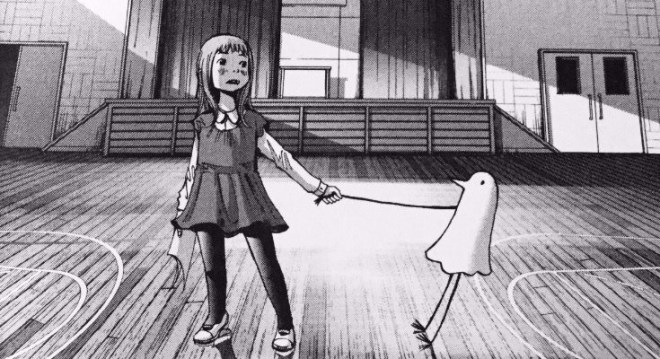
De-familiarization is a tricky task: make things too bizarre and you risk alienating an audience rather than bringing them closer into what they traditionally enjoy. When the entire premise of a work rests on the disruption of a particular reading habit, everything can fall flat if the abnormalities are poorly introduced or managed throughout the work. We could point to Handshakers as an example of a failed attempt of this: most of the attention the show received was made up of its followers pointing and laughing at everything they saw. There was little discussion of the potential artistic merits of the bizarre animation, because barely any potential was seen. Regardless of intent, the strange stylistic choices came across as little more than, well, strange.
You don’t need to be flashy to de-familiarize something in your story, though. Simple touches can be all you need to draw your audience in and make them feel like they’re experiencing something ‘new’. Some creators do this by not adding anything at all: rather, they take something away. In minimalist works, like Beckett’s Waiting for Godot, this can be taken to the extreme: whole dimensions of setting and plot progression can be brought close to nothing. But again, one simple subtraction can be enough.
What if the most interesting character almost never spoke?

Continue reading Komi-san wa Komyushou Desu: Saying More Through Silence
How The Hell Does The Rising of the Shield Hero Support Slavery?
We’re more than halfway through The Rising of the Shield Hero, and two things have been consistent: the quality of Kevin Penkin’s incredible soundtrack for the show, and the outrage of many Western anime fans, bloggers and critics over the story’s ‘controversial’ elements. From the first episode alone, many denounced the series for its use of a false rape accusation to establish it’s central conflict, claiming this to be outright misogynistic or simply in poor taste in the wake of ‘#MeToo’ activism. But beyond that initial furor, another outcry has been consistently present on social media. Continue reading How The Hell Does The Rising of the Shield Hero Support Slavery?
‘Metamorphosis’ and the Meaning of Hentai
“In many ways, it was both a tragic and a preachy story, but I wanted ‘Metamorphosis’ to be about seeing the charm of a girl who is going through genuine misfortune” – ShindoL, ‘Afterword’ to Metamorphosis
People like to uphold a firm line between ‘art’ and ‘porn’; there is a difference, they will say, between ‘erotica’ and mere pornography. The former is sexually explicit in a way that conveys some kind of recognizable artistic merit; the latter has no such merit to speak of. But in the maelstrom of stories and drawings and bits of film that seem to serve little other purpose than titillation, like needles in haystacks, we often come across works marked ‘porn’ that strike us as something else by the end.
Pornography occupies a space in media that rebels against the idea that a story needs narrative themes and fleshed-out characters. In traditional narratives, every element combines to serve the audience’s immersion into what will happen next, and the possible greater meanings of what’s happening now. In porn, we know what will happen next – characters will fuck, or be fucked, to engage in some other activity to stimulate the voyeur and make them satisfied with their fantasy. Everything is supposed to serve this end – any narrative matter is just foreplay, or something to encourage the viewer to seek out this kind of fictional fulfillment again. These are the rules, the patterns we trust when we come to enjoy some ‘me time’ with this material.
ShindoL’s Metamorphosis doesn’t play by the rules. Continue reading ‘Metamorphosis’ and the Meaning of Hentai
Is Your Anime Illegal? The Trouble With the Miller Test
Amidst memes of the FBI raiding your house for watching a cartoon, there’s a general anxiety about the place of lolicon media in the West. In some states of America, being in possession of ‘obscene’ doujnishi can land you with a prison sentence, as Iowa resident Christopher Handley discovered after he was put on trial for ordering ‘drawings of children being sexually abused’. Neil Gaiman spoke out against Handley’s imprisonment in his onine journal:
You ask, What makes it worth defending? and the only answer I can give is this: Freedom to write, freedom to read, freedom to own material that you believe is worth defending means you’re going to have to stand up for stuff you don’t believe is worth defending, even stuff you find actively distasteful, because laws are big blunt instruments that do not differentiate between what you like and what you don’t, because prosecutors are humans and bear grudges and fight for re-election, because one person’s obscenity is another person’s art.
Because if you don’t stand up for the stuff you don’t like, when they come for the stuff you do like, you’ve already lost.
Continue reading Is Your Anime Illegal? The Trouble With the Miller Test
Peepoodo & The Super Fuck Friends: How To Talk About Perverts
“An educative series for children over 18 years old, Super Fuck Friends explores sexuality without taboos and in all its forms, including dicks and nipples. A positive sexuality, that is unrestrained and totally ignores prejudices… culminating into one single message: tolerance.” – Bobbypills
There was a time when suggesting Boku no Pico to someone looking for anime recommendations was considered comedy. Nowadays it’s hard to make anyone on the internet surprised by the depths of depravity that media can go to. The idea that Japan produces, shall we say, ‘questionable’ content is more or less common knowledge: streaming services like Crunchyroll have helped this further by listing popular (mostly-)safe-for-work anime alongside bizarre farces like Eromanga-sensei. But as much as the average person knows more about the existence of taboo pornography, when it comes to talking openly about it there’s been a lot less progress.
Some shows have tried to tackle the silence around sexual taboos: Shimoneta’s liberal stance on pornography, and its criticisms of what censorship can do to the knowledge of sex, made its comedy strong. But when people see the perversions of otaku – particularly those who choose to devote their lives to virtual characters, because they’ve lost hope in reality – there are far more judgements flung around than attempts to understand matters from the perspective of the ‘pervert’. That’s why the sixth episode of Peepoodo & the Super Fuck Friends, a French parody cartoon directed by comics artist and animator Yves ‘Balak’ Bigerel, is a breath of fresh air. Continue reading Peepoodo & The Super Fuck Friends: How To Talk About Perverts
No, Anime News Network, Rising of the Shield Hero’s Premise Isn’t Misogynistic
After casually running an advert for a dangerous far-right Japanese cult, Anime News Network has returned to the realm of controversy with their preview guide for Rising of the Shield Hero, an adaptation of Yusagi Aneko’s isekai light novel. The story follows ‘somewhat otaku’ Naofumi as he’s thrust into a video game-like world that’s on the brink of annihilation, unless he and three other heroes become strong enough to fend off the apocalyptic perils that have been prophesied. Naofumi thinks he’s a hot shot, but his reputation soon crumbles to ruin as he finds himself the recipient of a false accusation of sexual assault. Continue reading No, Anime News Network, Rising of the Shield Hero’s Premise Isn’t Misogynistic
Censorship: Won’t Somebody Please Think of the Pixels?
Life is much easier for artists who don’t even think of venturing into obscenity. As popular as pornography is to the masses, so too is the public sentiment of moral outrage. Opinion columns, comment threads and social media echo chambers will never cease to be free of reams of outbursts against the latest film that went too far, or how a certain video game has sexual content that isn’t completely consensual between the characters. What is permissible in fantasy seems too often down to what people will be willing to shout about, rather than the taboos in question being examined with care.
The forces of censorship acting on different forms of media – books, film, television, anime, video games, online spaces – are not disparate: they are connected by common threads of government pressure and moral panic expressed by the public. Those who choose to perform thorough research on the value of prohibiting the sale of ‘obscene’ films, images and video games are more often deemed suspect rather than significant. But while lines of acceptance can be easy to draw for one’s self, drawing them for a community requires an appreciation of everything that’s at stake. Continue reading Censorship: Won’t Somebody Please Think of the Pixels?
Mind Games: How Psychonauts Crafts its Characters
It can be hard to find video game characters that speak to the player as specifically video game characters. Many collections of polygons given lines of dialogue are simply an attempt to capture a cinematic figure. Games, as a medium, are about interaction. Dialogue trees and skippable side-quests can give the player the feeling that they are actively choosing to develop one character over another, but it’s rare for the entire gameplay experience to function as a method of constant characterization. We shoot the bad guys, we collect the secret items, and we wait until the next cutscene or dialogue snippet to get more of the story, and more ‘flesh’ for our cast.
It doesn’t have to be this way.
Continue reading Mind Games: How Psychonauts Crafts its Characters
Rotten Chivalry: The Role of Women in Goblin Slayer
(note: this article is from an anime-only perspective, and is primarily aimed at anime-only viewers)
Medieval fantasies often have trouble with the agency they give to women in their worlds, from societies over-populated with passive princesses to ‘strong female characters’ that have little complexity beyond being, well, strong and female. These stories are always under the shadow of period of history that saw the height of a patriarchal social structure and the treatment of the ‘fairer sex’ as little more than property. Modern writers should feel encouraged to subvert tropes and cliches in order to find new room for characters other than knightly men to flourish. Yet, one show this season has stumbled when it comes to handling a large part of its cast.
Goblin Slayer, a light novel adaptation under the direction of Girls Last Tour’s Takaharu Ozaki and scriptwriters Yousuke Kuroda and Hideyuki Kurata, caused an uproar from its very first episode after an opening segment of typical fantasy fare (wrapped in the cowl of an erroneous PG-13 rating) led anime-only viewers unaware into a rape scene. The latest episode of Sword Art Online has sparked similar controversy, but in SAO’s case complaints have been leveled both at the inclusion of the scene and at the attempts at censorship that left the sexual assault feeling even more dramatic and extreme. Goblin Slayer’s scene was less detailed, but it turned many people off the show just as it had begun, as fears abounded that sexualized violence would be the show’s only way of marking itself as ‘hardcore’.
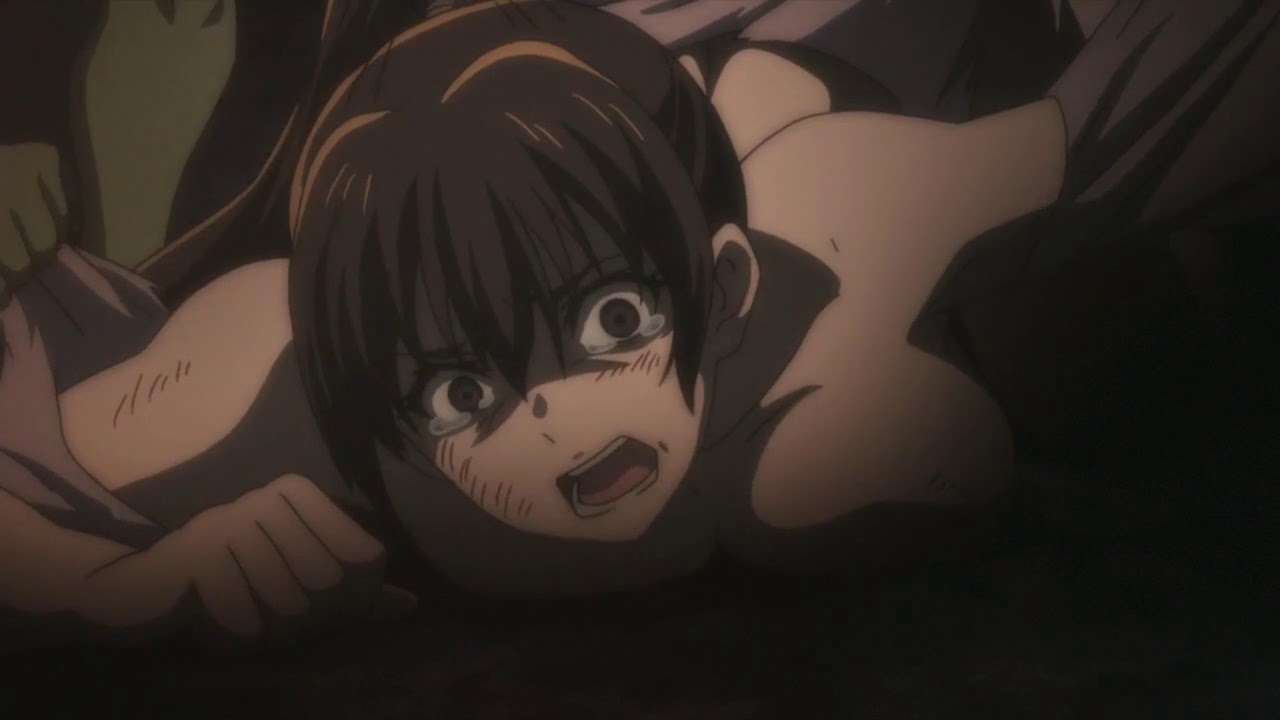
Unfortunately, that seems to be all too much the case. In the ten episodes that have aired so far, Goblin Slayer has drawn practically every conflict towards the subject of the violation of women. In addition to the goblins putting young girls in peril in order to reproduce, and capturing and torturing many of their victims, the Demon Lord’s sect in episode 6 also had to have a naked girl bound up in order to look evil enough. The ogre in episode 5 threatens to violate our heroine if she survives; the hobgoblin in episode 7 makes her piss herself before biting off part of her arm; the Slayer’s backstory is directly rooted in the goblins using his sister ‘as their plaything’, so every bit of his motivation in battle could be said to have the memory of rape behind it.
While our hero focuses entirely on slaying goblins, something similar could be said for how all our villains concentrate their nastiness towards women rather than men.Sexual violence is a central part of Goblin Slayer’s plot and thematic map. As a child, the Slayer was told by his master that ‘it all begins with whether or not you’re going to do something, so do something’: he has to be an active hero, in order to save what are figured as passive victims. He is the stereotypical chivalric knight who has to rescue the damsels in distress. As much as there are female warriors in the story, their agency is diminished by the sexualized power of the goblins, as the Sword Maiden exemplifies with her fear of them. She defeated the Demon Lord, she is terrified of goblins because they took her virginity, and so her incredible power is undercut. ‘Women are weak creatures’, she says to the Slayer, an ultra-masculine knight who embodies the antithesis of fear with his unfeeling, armour-clad, calculated slaughter of her greatest enemy.

Though the party that defeats the Demon Lord is shown to be entirely female, their great battle is subverted into an aside for the ‘real’, down-to-earth struggle against goblins that the Slayer has devoted himself to; the Demon Lord might threaten the world, but goblins wage war against the sanctity of life itself. As we see in episode 8, the ‘miracle of resurrection’ requires the virginity of a woman. The preservation of bodily health is grounded in a traditional value of feminine purity, and the goblins exist as a force to corrupt that value. There are no female goblins, so their reproduction necessitates the violation of human women. The myth that envy turns you into a goblin also co-operates with their identity as little green rapists. Their existence is a corruption of a domestic order that the Goblin Slayer – haunted by his past failure of protecting his own domestic order – must protect at all costs; an order ultimately grounded in the value of sexual consent. But when every monster victimizes women in order to emphasize its evilness, the goblins lose their status as the prime corrupting force of natural life, and it makes less thematic sense for the Slayer to exclusively focus on them.
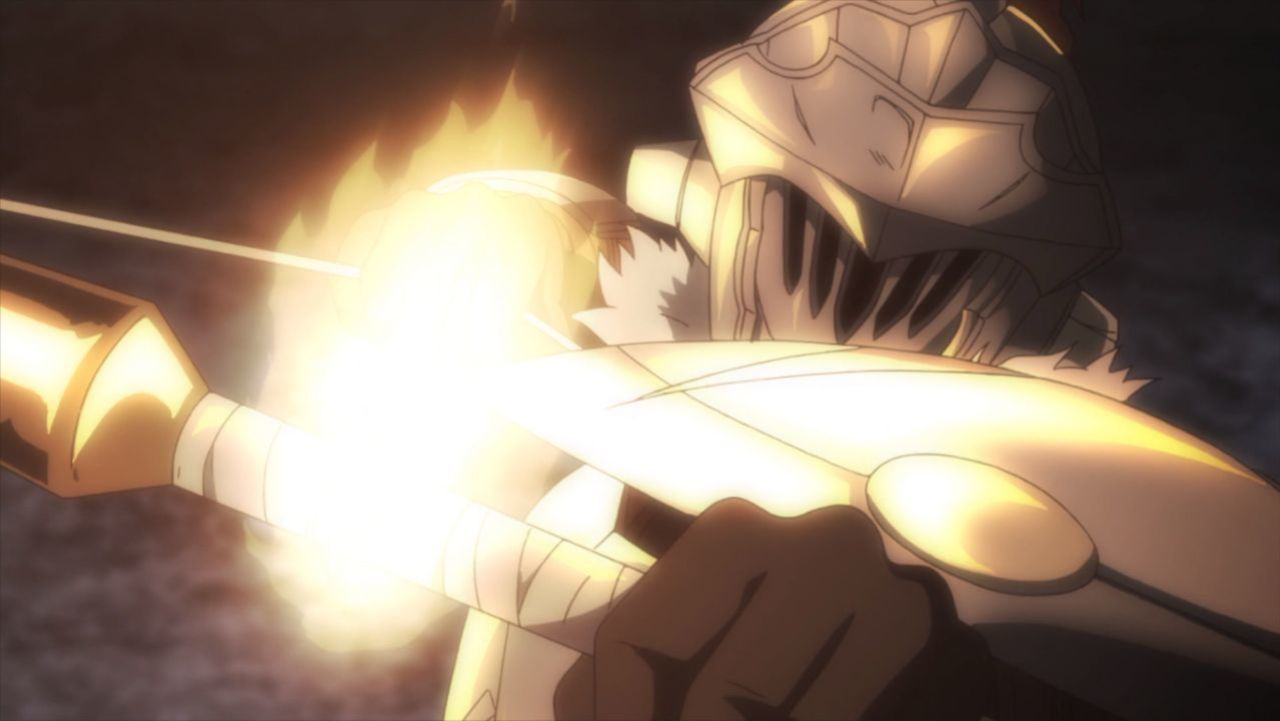
Having a particular monster species terrorize women in order to survive is one thing, but Goblin Slayer constructs very few other varieties of evildoing in its worldbuilding. The demoted scout in episode 5 still has to be shown to have the desire to murder an innocent lady, and the Slayer has to once again be a manly hero who prevents the suffering of women in the world; he’s even compared by Uketsuke-jou to other perverse men she’s met, reinforcing an idea that chivalric values are ultimately rooted in how one treats the ‘fairer sex’. We see this repeated in episode 8, as the shopkeeper leers at our heroine before being interrupted and intimidated by the Slayer, noticing his silver rank.
While embracing the DnD paradigm of ‘lawful’ vs ‘chaotic’, ‘good’ vs ‘evil’, the ‘good’ for men is rooted in their treatment of women much more than their homosocial ties with other men. We even see this in the side characters at the guild – most of the groups are paired boy and girl, man and woman. There’s little to talk about in terms of developed relationships between male characters, and we’re ten episodes into the show. It’s also disappointing that domestic bonds are figured as being fixed in the heteronormative, men acting unto women in order to prove their worth. It’s rare that women save other women, or men other men.

The paradigm is set in stone – the Slayer is the masculine strength that must protect the world, but the women around him must teach him to be more human, more feeling towards others. It’s a hegemonic approach – men must be strong but unfeeling, and women weak but caring. The Slayer could be read as a site of identification for men who feel skilled at their jobs while being unable to connect to the world they’re serving with those skills, but such a parallel doesn’t have to be established with women positioned as an inferior ‘Other’. Our heroine is always looking to the Slayer for the next move, and the female elf of the party isn’t even named, which emphasizes how little impact she has on the larger plot at all. While the dwarf and lizardman are also without names, they are always steadfast in battle: it’s the elf that’s regularly shown to be dealing with fear.
What disappoints me the most is that medieval narratives of chivalric ‘Romance’ weren’t restricted to this treatment of women back in the days when they were first formed: they did not even necessitate the forging of ‘romantic’ bonds between man and woman in the modern sense of the word. In Gawain and the Green Knight, what defines Gawain is mainly his engagements with other male knights, and this does not rely on a simple binary of ‘good’ knights treating women with respect and ‘bad’ knights being rude or harmful towards them. Even at a time when women were considered much more as property than today, chivalry was as much about your oaths to other men; your loyalty, your prowess at defending your honour and that of others. Like many other stories of its kind, Goblin Slayer falls into the trap of donning the medieval attire but losing sight of the complexities that made the original knights in shining armour so compelling.

Violence against female characters should remain an important part of what can code masculine villains as villainous, but we need to have more dimensions for evildoing in medieval fantasy worlds. The threatening of women is commonplace for any warring tribe, but their victimization in Goblin Slayer has overstayed its welcome, and this problem is exacerbated by the Slayer’s identity being founded upon how women perceive him as something greater than other men – and themselves – because of his unfeeling slaughter of little green rapists. When chivalry is limited like this, it limits the role and agency of female characters, and becomes rotten at its core.
A lot of tropes and cliches in anime are a blast, but the stereotypes that make up Goblin Slayer’s storytelling structure are crumbling columns that have borne the loads of hundreds of years of hackneyed representations of female characters. The story needs more weight to keep itself upright – modern medieval fantasies can’t be built on the idea that women need men to be their strength.
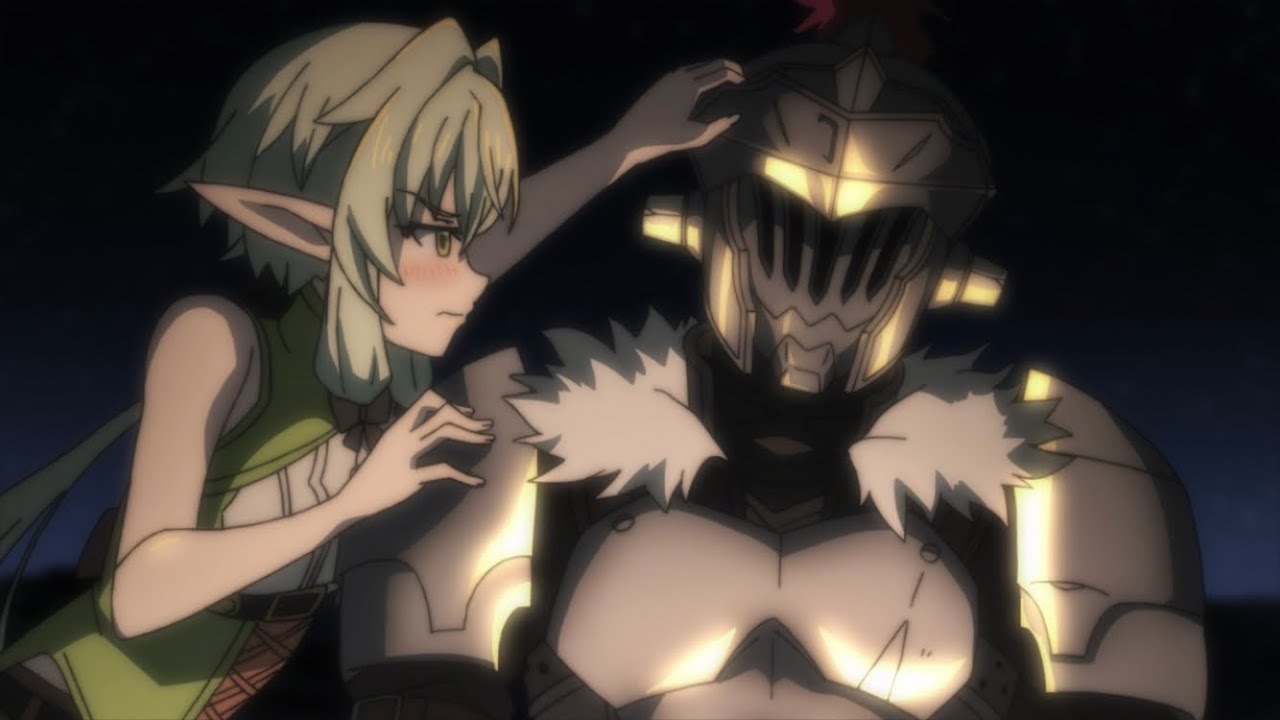
Yuru Camp: Out of the Clubroom, Into the Campfire
Many shows have their blissful moments, but some anime dedicate themselves entirely to bringing the viewer to a state of peace. Iyashikei, or ‘healing’ anime, build themselves upon a foundation of wanting the viewer to feel stress-free, and better in touch with themselves and the world around them. It was no surprise that Yuru Camp, one such show about a group of young girls finding fulfillment by camping in the great outdoors, proved to be hugely popular when it aired. But Yuru Camp goes beyond mere bliss in what it can inspire in its audience, and in how it encourages us to break down the limits we can set around finding peace in our own lives.
Continue reading Yuru Camp: Out of the Clubroom, Into the Campfire
What Manga Tokyo’s ‘Redefining Otaku’ Article Gets Wrong
A few weeks ago, anime fansite Manga Tokyo launched a new column with its first article, Redefining ‘Otaku’ in the Modern Era. Within it, columnist Tim Rattray (who also writes for Crunchyroll, and his personal blog) takes aim at the stereotype of otaku as extremely anti-social, which he claims is still prevalent in how ‘otaku’ are discussed. He believes that the English-speaking sphere of the anime community needs to take responsibility in ‘redefining’ the word that has been loaned to us, and that we likewise need to set an example for the future of ‘otaku’ worldwide: “Let’s show the world why being otaku is great”.
Tim’s more recent article for this column asserts simply, and correctly, that when it comes to talking about otaku from as an ‘outsider’, “the fine line comes down to but one thing: respect” – but I don’t think Tim’s discussion of “Redefining ‘Otaku'” is respectful at all. Continue reading What Manga Tokyo’s ‘Redefining Otaku’ Article Gets Wrong
Lolicon: Where Do We Draw The Line Around Drawings?
Recently, popular Twitter user Bardock Obama has made it his mission to ‘bury’ Digibro over his tweets regarding Patreon’s new rules about what artists funded on their site are allowed to draw:
I hear @patreon has instituted new rules banning illustrated incest, bestiality, and loli porn. Um… why? What does Patreon stand to gain by shunning artists based on the fetishes they draw? If they think this is a moral line in the sand, I’ve lost a ton of respect for them. (https://twitter.com/Digibrah/status/978050277713555457)
When some people began to insinuate that he was personally insecure about losing the ability to support these kinds of pornography, Digibro went on to explain that he had been a fan of lolis – a ‘lolicon’ – for a long time:
Where do I get these new motherfuckers from? Do you even know who I am? I’m pretty sure I’ve been loudly proclaiming my love for lolis for like 15 years where the fuck have you people been? If you think I’m going to be embarrassed by being called out you know dick about me. (https://twitter.com/Digibrah/status/978345008481886209)
In response, Bardock tweeted out that people shouldn’t let ‘children and now pets near this dude’. This progressed to him getting in contact with Crunchyroll, Funimation, VIZMedia, Toei Animation and Anime Expo in order to have Digibro boycotted or blacklisted by these platforms – apparently, one has already accepted this request (UPDATE: this tweet has now been deleted, suggesting it was false information). He wants this to be the ‘end’ of Digibro’s career. The harassment Digibro then received from Bardock’s followers led to him feeling the need to go private. Continue reading Lolicon: Where Do We Draw The Line Around Drawings?
Earth-chan, VRChat and Becoming the Bishoujo: More Reflections on Moe
More than a year ago I wrote a long piece on moe, an otaku’s response to cuteness which has been frequently discussed but rarely defined. While that article served as a place to unpack many of my thoughts, it was also a reactionary piece to an article from The Mary Sue, and became mired as a result in a kind of ‘anti-feminist’ discourse that got me a few too many rabid ‘these women want to kill all men grrr’ followers as a result. A lot of them have since lost interest in this blog given that I’m not actually interested in their ‘feminism is cancer’ perspective.
Granted, I was bitter towards how such an interesting affective response was being portrayed by The Mary Sue, and how Galbraith’s work had been glossed over as ‘misogynistic’. I was especially jaded by how the female voices in his studies – which while being fewer had brought some brilliant observations to the table – had been sidelined rather than drawn out. There’s still a pervasive myth that otaku spaces are a men’s world, and that moe is a man’s code for a misogynistic, infantilizing view of women, which ignores how moe is used by fujoshi and the strict division of most otaku between the virtual and the real. But one quote from Galbraith’s The Moe Manifesto, from voice actress Momoi Halko, has stuck with me throughout my musings on what moe means to many different people:
“More than a desire to date a cute girl or anime character, it is a desire to become her.”
Continue reading Earth-chan, VRChat and Becoming the Bishoujo: More Reflections on Moe
Perfecting Anime: What Makes the Difference?
I’ve never seen someone talk about a ‘perfect’ piece of art except as an exaggeration. Even when we’re totally ‘satisfied’ by what we’ve watched, we’ve already accepted that after a certain number of rewatches we’ll come to find something in what we’ve seen that sticks out as a fault. Still, as much as true ‘perfection’ in art is an illusion, it’s something every creative person thrives for: the exact execution of what they have in mind.
But with a process as multifaceted as anime production, how can all these individual visions flourish in the way they want to? Continue reading Perfecting Anime: What Makes the Difference?
How Eromanga-sensei Made its Mark: Masochism and the Modern Otaku
There are few things the Western anime fandom can agree on, altogether. It’s hard to argue that Neon Genesis Evangelion wasn’t an monument of the medium, or that Berserk 2016 looked okay. But even when we unite on one opinion, we can still end up deeply divided.
This year, Eromanga-sensei was labeled ‘trash’ by both fans and haters, and rightly so. It goes beyond the idea of simply ‘trashy’ media (trash-like, sharing-qualities-with-the-idea-of-trash) and blatantly basks in its identity as a piece of garbage. For its devotees, it was one of the highest quality pieces of animated defecation the ‘idiot otaku gets surrounded by hot chicks of questionable ages and also his sort of his sister and fucks none of them’ genre has delivered. But among its critics, there have been some remarkably unfair judgements. In framing the show as one of his most hated of the year, Super Eyepatch Wolf did more than express his dislike of it: he didn’t believe that anyone could have been passionate about it. Continue reading How Eromanga-sensei Made its Mark: Masochism and the Modern Otaku
Confusing Desire: The Trouble with ‘Traps’
Last week, Youtuber and PC gaming personality TotalBiscuit sparked controversy when he took to Twitter to call for the removal of an attendant of CoxCon, a privately-run convention for fans of Jesse Cox. The man’s offense? During a panel fielding questions from the floor, he asked “are traps gay?”.
Opinions are split on how ‘insensitive’ it was to throw this internet meme into a public space where many identifying as trans would be in attendance. Two extremes were erected; either the question was harmless, and trans people just need to learn about the context of ‘traps’ online, or it was incredibly offensive, and those who disagree just need to learn about the contexts of trans history that render it that way. I can find sympathy with both positions. While the idea of a ‘trap’ in anime fandoms is indeed not supposed to refer to trans people, those who defend the meme have a habit of refusing any discussion of trans issues that explain why ‘offense’ was taken Continue reading Confusing Desire: The Trouble with ‘Traps’



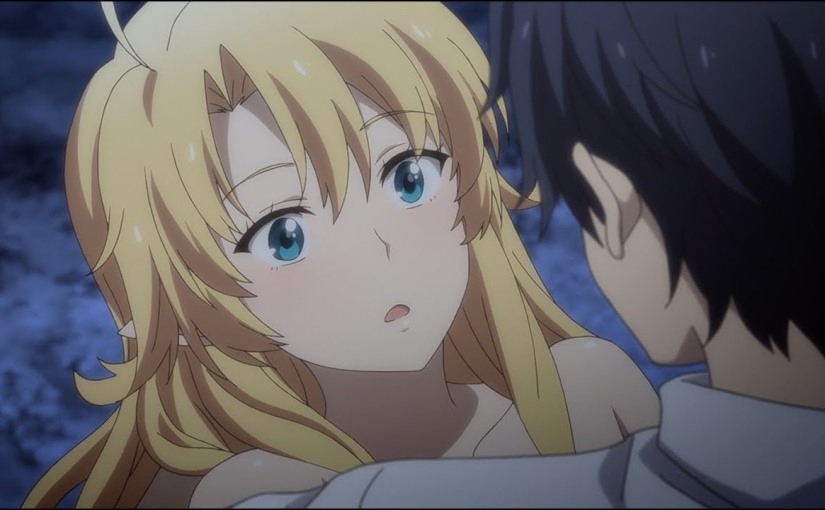









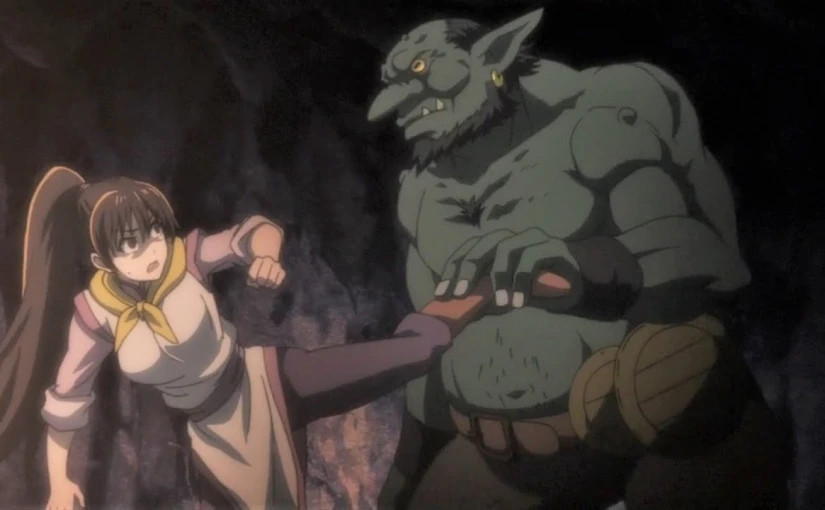







You must be logged in to post a comment.